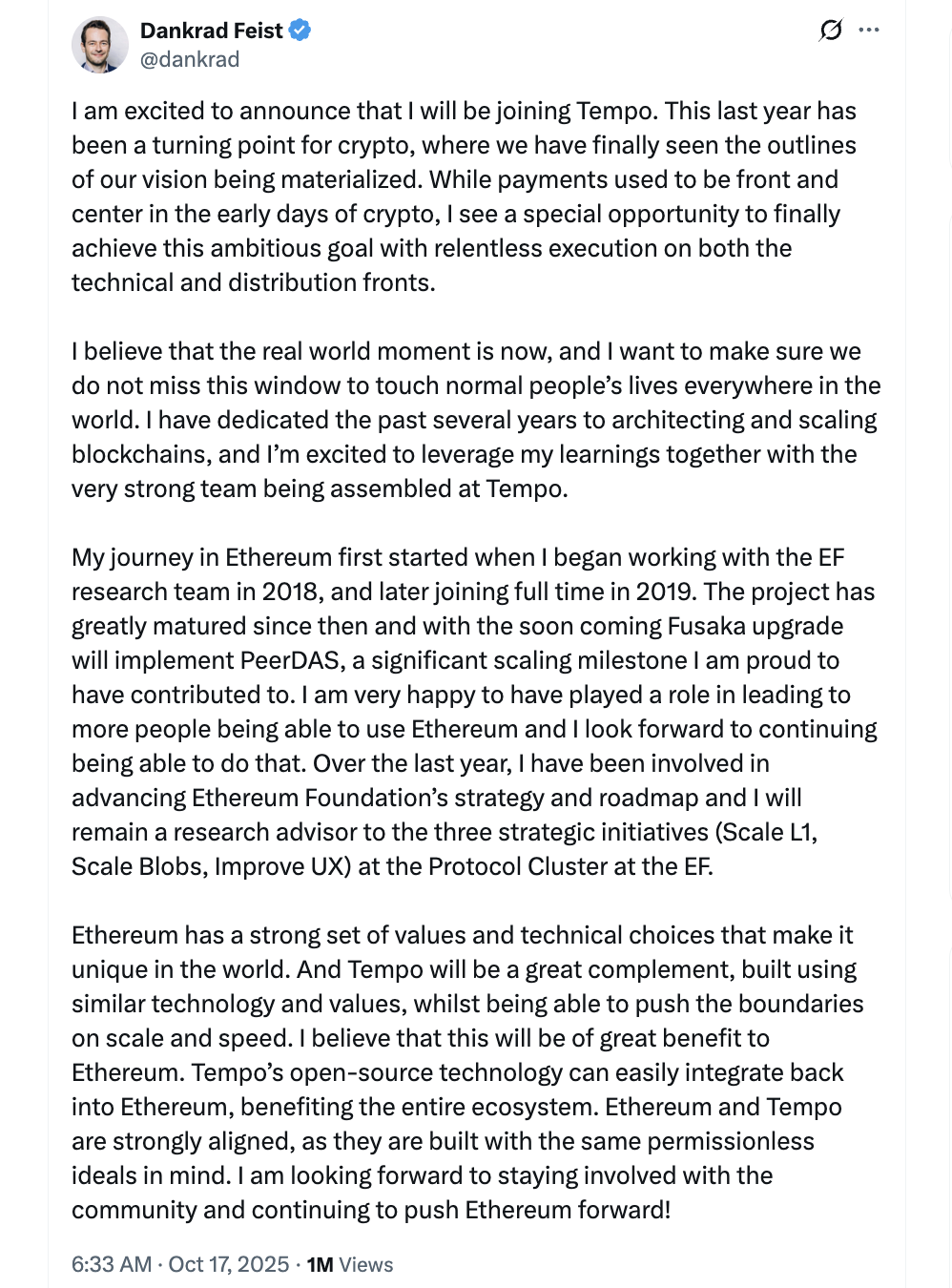Longtime Ethereum Researcher and Developer Dankrad Feist Joins Tempo
Dankrad Feist, a longtime Ethereum developer and researcher at the Ethereum Foundation, announced Friday that he’s joining Tempo, a layer-1 blockchain for payments and stablecoins built by Stripe and Paradigm.
Feist said he will remain as a “research adviser” at the Ethereum Foundation to provide input on scaling the layer-1 network, improving user experience (UX), and blobs, a feature of the Ethereum network that frees up blockspace by temporarily storing data. He added:
“Tempo’s open-source technology can easily integrate back into Ethereum, benefiting the entire ecosystem. Ethereum and Tempo are strongly aligned, as they are built with the same permissionless ideals in mind.
I am looking forward to staying involved with the community and continuing to push Ethereum forward,” he said. Cointelegraph reached out to Feist but was unable to receive a response by the time of publication.

The announcement drew mixed reactions from the Ethereum community, with some sending messages of support and others seeing it as a loss of one of the Ethereum ecosystem’s most significant contributors during a year of significant change for the ecosystem.
Related: Ethereum Foundation converts 1,000 ETH for stablecoins to fund R&D, grants
Crypto community divided on Stripe’s Tempo blockchain
The crypto community also remains divided regarding the Tempo blockchain and whether a payments-focused, dedicated stablecoin blockchain network is even needed.
“No one wants another chain,” Joe Petrich, head of engineering at non-fungible token (NFT) platform Courtyard, said in response to Stripe CEO Patrick Collison’s Tempo announcement, adding that there is “no need for yet another chain.”
https://www.youtube.com/watch?v=20zFEDQdKl8
Ethereum Foundation researcher Devansh Mehta also questioned the decision to launch Tempo as a purpose-built blockchain instead of just becoming an Ethereum layer-2 scaling network.
App-specific layer-1 chains that must build out their own validator set suffer from centralization issues and could face increased legal liability, Mehta said.
The debate comes amid a time of tension between Ethereum and its many layer-2 scaling solutions, which some have characterized as cannibalizing Ethereum’s base layer revenue and a downward force on Ether’s (ETH) price despite bringing user traffic to the ecosystem.
Magazine: Back to Ethereum: How Synthetix, Ronin, and Celo saw the light


